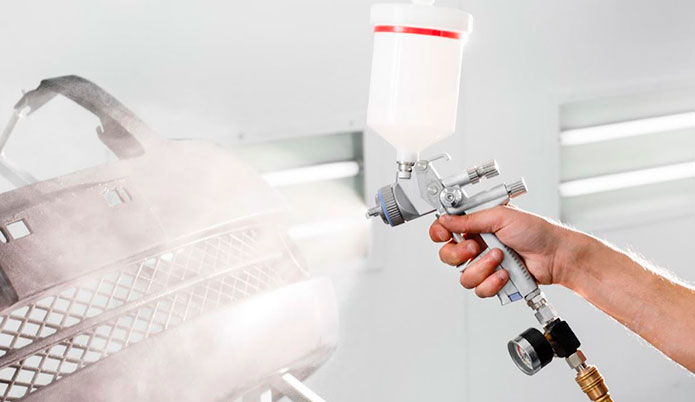ATEX in workplaces: Basic guide to identify explosive atmosphere hazards in your facilities and ensure compliance with mandatory regulation
All companies which handle potentially explosive or inflammable materials in their facilities must comply with the European ATEX regulation and have an Explosion Protection Document (EPD) in place. But what type of companies and activities does this concern, and how can explosive atmospheres be identified and prevented?
The following guide reviews the main ATEX hazards and their possible corrective measures, as well as the requirements which ensure that this European regulation is adhered to, and the legal implications for business owners.
How are explosive atmospheres created?
The three main elements which, in combination, produce a potentially explosive atmosphere are:
- Flammable or combustible substances
- A particular concentration of conducive atmosphere (oxygen)
- An ignition source
Thus, any company or facility which is likely to accumulate these elements is capable of producing ATEX, from small facilities such as sawmills, to large oil rigs.
Which industries and activities tend to produce explosive atmospheres?
While some industries could clearly produce explosive atmospheres, such as the chemical industry, companies in the energy sector and waste treatment, or refineries, there is in fact a long list of industries and factories which could require an EPD. This is a general list of sector types and conditions which could require ATEX:
- Chemical industry and refineries: The treatment of gases, liquids and flammable solids could produce explosive mixtures. For example the hydrocarbons which refineries work with are all flammable and can produce explosive atmospheres even at room temperature, depending on their flash point.
- Waste disposal, recycling and landfill companies: Digestive gases such as methane generated in the treatment of waste can form explosive mixtures of gas and air.
- Wood industry and enamelling workshops: Working with pieces of wood or enamel spray can create explosive mixtures in filters or in silos due to the build-up of sawdust or the formation of mist.
- Civil engineering facilities: Flammable gases can accumulate in poorly ventilated tunnels, basements etc.
- Metal industry: The treatment of the surface of the metal can produce explosive metallic dust, especially with light metals such as aluminium.
- Distillery, food and agricultural industries: The storage of cereals, sugar and other raw materials, which produce fine dust, can create explosive atmospheres. Distilleries are also affected by ATEX hazards, as the distillation process require the concentration of alcohol vapours.
How to avoid creating an explosive atmosphere
If we work in one of these environments which require an EPD, how do we avoid the creation of an explosive atmosphere? We mentioned above that in order to produce an explosive atmosphere, three elements are required: flammable substances, oxygen and an ignition source. Therefore, eliminating the danger involves getting rid of one of these elements. As it is very difficult to get rid of oxygen in a normal atmosphere (although this can be done) we have the following options:
- Reduction or replacement of flammable substances: For example reducing flammable solvents or cleaning products, or replacing them with different solutions. In the case of dust, it would be necessary to increase the size of the particles of the substances used. Another example would be to use pastes to avoid creating a suspension of dust particles.
- Limit the concentration: Explosive substances such as gases and powders can only be explosive within certain concentration limits in contact with the air. In certain operating and environmental conditions it is possible to avoid these explosive limits, for example by controlling the temperature of the environment to avoid reaching the flash point, which is the minimum temperature at which the substances produce vapours.
- Avoid ignition sources: Measures can also be taken to avoid effective ignition sources by avoiding heat sources, electric currents etc. in certain areas of the facilities.
ATEX Certification & Legal context: The directives regarding ATEX facilities and equipment
Health and safety at work is a very important topic in the social and labour policy which the European Union has been exploring in recent years. Although explosions are fortunately not the most frequent cause of accidents at work, their consequences tend to be very important in terms of economic cost and loss of human lives. There are two types of ATEX directives which companies must comply with:
- ATEX Directive 2014/34/EU. Regulates the equipment and protective systems which are intended for use in potentially explosive environments.
- ATEX Directive 99/92/EC. Indicates the minimum requirements to safeguard the health and safety of workers exposed to risks relating to explosive atmospheres.
Compliance with ATEX in the workplace: the Explosion Protection Document
To comply with these directives, companies must carry out an explosion risk assessment, examining first of all whether a dangerous explosive atmosphere could be produced in their facilities.
In cases where there is a risk, each of the affected ATEX zones must be classified in terms of risk level and the type of flammable or explosive material (gases, vapours or dust), and an EPD must be produced. This document will include the conclusions of the risk assessment and the technical and organisational measures to be carried out in order to avoid the risks of explosion, as well as the requirement to use or install ATEX certified machinery.
Self-assessment or external inspections
As we have said, the ATEX assessment of potentially explosive facilities is mandatory in Europe. Large companies often turn to third parties to assess and inspect the facilities and create the Explosion Protection Document (EPD), the document which ensures compliance with the ATEX regulation.
Other companies tend to have limited resources for carrying out this type of inspection or for outsourcing the ATEX assessment, but the size of the company does not exempt it from complying with this regulation. Self-assessment should only be considered if qualified staff is available.
In some cases companies turn to other prevention services, but these services are usually not specialised in ATEX risks. The most reliable option is to go to an external company which has expertise in ATEX risks.
Legal responsibilities in case of non-compliance
It must be stressed that if a worker is seriously injured, or injuries are caused by company negligence, there is personal liability, not just company liability. Therefore, the company owner can face criminal charges in addition to financial penalties.
Even if no accident occurs, this document can be requested by insurers, as well as for an administrative audit or labour inspection.
There are many workers and business owners who are unaware of the risks and regulations regarding explosive atmospheres and the significant damages which these can cause in terms of workers and economic losses. For this reason, disseminating information regarding ATEX is very important so that all potentially explosive facilities have the appropriate protective measures and equipment in place.
For more information take a look at the services of Applus+ Laboratories in the area of ATEX compliance for facilities and workplaces.

